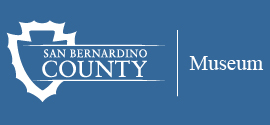|
CALIFORNIA CURRICULUM and CONTENT STANDARDS of ANIMAL TRACKS
Younger students may not be mature enough for artistic work with these forms. Many students, however, will be able to competently create print molds and accurately paint them (for location terrain) or include prints in an outdoor scene. Students will model Artistic Perception (code 1), Creative Expression (code 2), Aesthetic Valuing (code 4), and Applications (code 5) as they design art work related to the prints. In many cases, scale drawing projects can be utilized as co-curricular exercises in science and math skills. Educators can expand lesson plans to contribute to artistic practice.
Content Standards vary with educator kit utilization. These identified standards can be used with all three kits in this set.
Kindergarten
Science |
Mathematics |
Visual Arts |
Life Sciences
2.a observe, describe similarities, differences
Investigation, Experimentation
4a observe common objects
4b describe properties
4d sort by one attribute
4e communicate orally & with drawings |
Number Sense
1.1 Compare sets of objects for number
1.3 Count etc. number of objects
2.1 Use concrete objects to determine math answers
3.1 Recognize when estimate is reasonable
Algebra & Functions
1.1 Identify, sort & classify
Measurement & Geometry
1.1 Direct comparisons of measurements
2.2 Compare plane & solid objects by common attributes
Statistics, Data Analysis, Probability
1.1 Collect data & record results
Mathematical Reasoning
2.1 Explain reasoning with concrete objects & pictorial representations
2.2 Precise calculations, validate results |
1.1 Recognize & describe simple patterns found in the environment
2.1 Use shapes, forms, and colors to make patterns
2.4 Paint pictures expressing ideas about neighborhood (nature) |
First
Science |
Mathematics |
Visual Arts |
Life Sciences
2a animals inhabit different environments & have features for this
2b animals need food, water, light
2c use of plants or animals for food
Investigation, Experimentation
4a draw pictures of features
4b record observations
4c bar graph data
4d make new observations to verify descriptions |
Number Sense
1.3 Represent equivalent forms
1.4 Count & group objects
2.2 Inverse relationship between add & subt to solve problems
2.5 Show meaning of addition
2.7 Reasonable estimates
Algebra & Functions
1.3 Create problem situations for number sentences
Measurement & Geometry
1.1 Compare measurements using direct comparison
2.3 Give & follow directions about location
2.4 Arrange & describe objects in space by location
Statistics, Data Analysis, Probability
1.1 Sort & describe categories
1.2 Represent & compare data
Mathematical Reasoning
1.1 Determine approach, materials & strategies
1.2 Use tools to model problems
2.1 Explain reasoning & justify procedures
2.2 Precise calculations
3.0 Note connections between problems |
1.1 Describe & replicate repeated patterns in nature
2.2 Begin to manipulate & use sculptural materials to create form
2.5 Create representational sculpture
4.2 Identify & describe reasons for making art
4.3 Describe how & why a selected work of art was made (by student)
4.4 Select something liked and something to change about own art
5.3 Identify & sort pictures/art work into categories |
Second
Science |
Mathematics |
Visual Arts |
Life Sciences
2 predictable life cycles
2d variation among species
Investigation, Experimentation
4b measure with appropriate metric tools
4c compare & sort
4d write/draw descriptions
4e construct data bar graphs
4f use magnifiers to observe & draw descriptions
4g follow oral instructions |
Number Sense
2.3 Mental arithmetic
4.0 Fractions/decimals may refer to parts of a set
Algebra & Functions
1.1 Commutative & associative rules
1.2 Problem situations to number sentences
Measurement & Geometry
1.1 Measure by iteration
1.2 Different units to measure same object
1.3 Measure length to nearest unit
Statistics, Data Analysis, Probability
1.1 Record numerical data in systematic ways
1.2 Represent data set in more than one way
1.3 Identify features of data set
1.4 Ask & answer simple questions related to data sets
Mathematical Reasoning
1.0 Make decisions about how to set up a problem
2.0 Solve problems & justify reasoning
3.0 Note connections between problems |
1.1 Perceive & describe repetition and balance in nature
2.3 Depict illusion of depth
2.4 Create painting/drawing using warm or cool colors expressively
2.5 Use bilateral or radial symmetry for visual balance
4.1 Compare ideas expressed through own art with that of another’s |
Third
Science |
Mathematics |
Visual Arts |
Life Sciences
3 adaptations for survival
3b diverse life forms
Investigation, Experimentation
5a repeat observations to improve accuracy
5b differentiate evidence from opinion
5c numerical data
5d predict outcome
5e collect data |
Number Sense
3.4 Know & understand that fractions & decimals represent the same concept
Algebra & Functions
1.4 Simple unit conversion
2.2 Recognize a linear pattern by its rules
Measurement & Geometry
1.1 Choose appropriate tools & units for measuring
Statistics, Data Analysis, Probability
1.1 Identify probability of common events
Mathematical Reasoning
2.1 Use estimation to verify calculated results
2.3 Use variety of methods to explain math reasoning
|
1.3 Identify & describe how foreground, middle ground and background are used to create illusion of space
2.3 Paint/draw to show illusion of space
2.5 Create imaginative sculpture based on an organic form
2.6 Create artwork emphasizing movement |
Fourth
Science |
Mathematics |
Visual Arts |
Life Sciences
2b producers & consumers are related in food chains & webs
3 organisms depend on one another & environment for survival
3b survival in environments
3c animals depend on plants
Investigation, Experimentation
6a differentiate observation from inference
6b measure & estimate
6c base predictions on cause-and-effect
6e construct & interpret graphs
6f follow written instructions |
Number Sense
1.7 Use pictorials to represent a given fraction
4.0 Factor small whole numbers
Algebra & Functions
1.0 Use variables to write & simplify expressions
Measurement & Geometry
3.3 ID congruent figures
3.4 ID bilateral & rotational symmetry
Statistics, Data Analysis, Probability
1.0 Organize, represent & interpret numerical data
2.0 Make predictions for simple probability situations
Mathematical Reasoning
1.0 Make decisions about how to approach problems
3.0 Move beyond a particular problem by generalizing to other situations
|
1.4 Describe concept of proportion as used in works of art
2.1 Use shading to transform a two-dimensional shape into an apparent three-dimensional form
2.3 Additive/subtractive processes in sculpture
2.7 Use contrast (light & dark)
2.8 Use complementary colors
4.1 Use visual arts language to clarify personal responses to art
5.3 Construct illustrations to communicate ideas |
Fifth
Science |
Mathematics |
Visual Arts |
Life Sciences
2 specialized structures for bodily functions
Investigation, Experimentation
6a classify objects
6b develop testable question
6c plan & conduct simple experiment
6d ID dependent & control variable
6f appropriate tools
6g record data
6h draw conclusions
6i write complete report |
Algebra & Functions
1.0 Use variables in expressions, compute for value of variable, plat & interpret results
Statistics, Data Analysis, Probability
1.0 Display, analyze, compare & interpret data sets
Mathematical Reasoning
1.0 Make decisions about how to approach problems
2.0 Use strategies, skills & concepts in finding solutions
|
2.2 Create contour observational drawings |
Sixth
Science |
Mathematics |
Visual Arts |
Life Sciences (Ecology)
5c populations categorized
5d different organisms have similar ecological roles
5e carrying capacity
Investigation, Experimentation
7a-e steps for conduction and reporting of valid investigations
7h ID changes in natural phenomena |
Algebra & Functions
2.1 Convert one unit of measurement to another
Statistics, Data Analysis, Probability
1.0 Compute & analyze statistical measurements for data sets
Mathematical Reasoning
1.0 Make decisions about how to approach problems
2.0 Use strategies, skills & concepts in finding solutions |
1.4 Describe how balance is effectively used in a work of art
2.3 Create a drawing using varying tints, shades, intensities
2.4 Create increasingly complex original works of art |
Seventh
Science |
Mathematics |
Visual Arts |
Life Sciences, Evolution
3a genetic variation & environmental factors as causes of evolution & diversity
3e extinction with environmental changes
Life Sciences, Structure, Function, Physical Science
5 complementary nature of structure & function
Investigation, Experimentation
7 Scientific investigations
7a appropriate tools
7b variety of resources
7c fully communicate logical connections from scientific evidence
7d model construction
7e oral & written reports |
Statistics, Data Analysis, Probability
1.0 Collect, organize, represent data sets with one or more variables, identify relationships among these. Use electronic spreadsheet software program.
|
2.1 Develop increasing skill in media use
2.2 Use forms of perspective to show illusion of depth
2.3 Use mixed media in a selected principle of design
2.4 Mix paints & show color relationships
4.1 Explain intent of personal work of art
5.3 Examine mixed media; discuss how differing representations lead to different interpretations; describe or illustrate the results |
Eighth
Science |
Mathematics |
Visual Arts |
Investigation, Experimentation
9 Scientific progress is made by asking meaningful questions and conducting careful investigations |
Dependent on the math course |
1.3 Analyze use of elements of art & principles of design as they relate to meaning in various media forms
5.2 Create painting that expresses personal opinions about current issues [eg. endangered animals] |
|



![]()